What to know about COVID-19 vaccines and how they work
There are several basic types of vaccines being developed to battle COVID.
Across the globe, scientists are scrambling to develop multiple vaccines with the goal of stopping the deadly coronavirus in its tracks.
All aim to neutralize the virus SARS-COV-2 before it makes you sick with COVID-19, but the way they work and how they were created take divergent paths.
Currently there are at least 48 vaccines being tested in experiments with human volunteers, and another 164 that are being studied in a laboratory.
Here’s everything you need to know about the different vaccine candidates racing to end the global pandemic:
How are they similar:
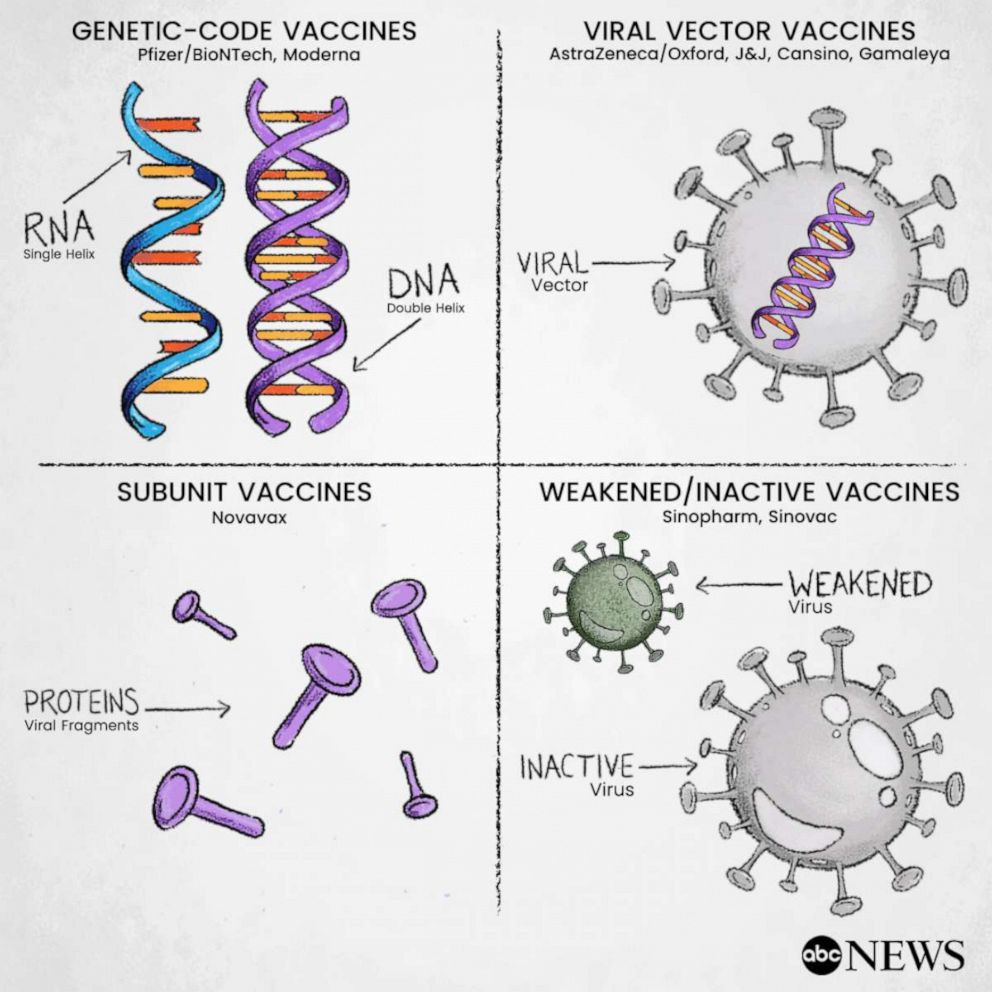
Many of these vaccines work in different ways, but they all have the same fundamental goal: to ensure you are protected from infection without making you sick. When you get a vaccine shot, the medicine flows through your bloodstream, tricking your body into thinking that you're being attacked by a foreign invader.
Your immune system swoops into action, churning out virus-fighting proteins called antibodies that can protect you from the would-be threat. Your immune system also has a pretty good memory, so it will spring into action again should you ever become exposed to the real virus.
Every vaccine is different, and it's not clear how long immunity for a COVID-19 vaccine may last. But the benefit of a vaccine is that it gets your immune system in fighting shape without making you sick.
How they are different:
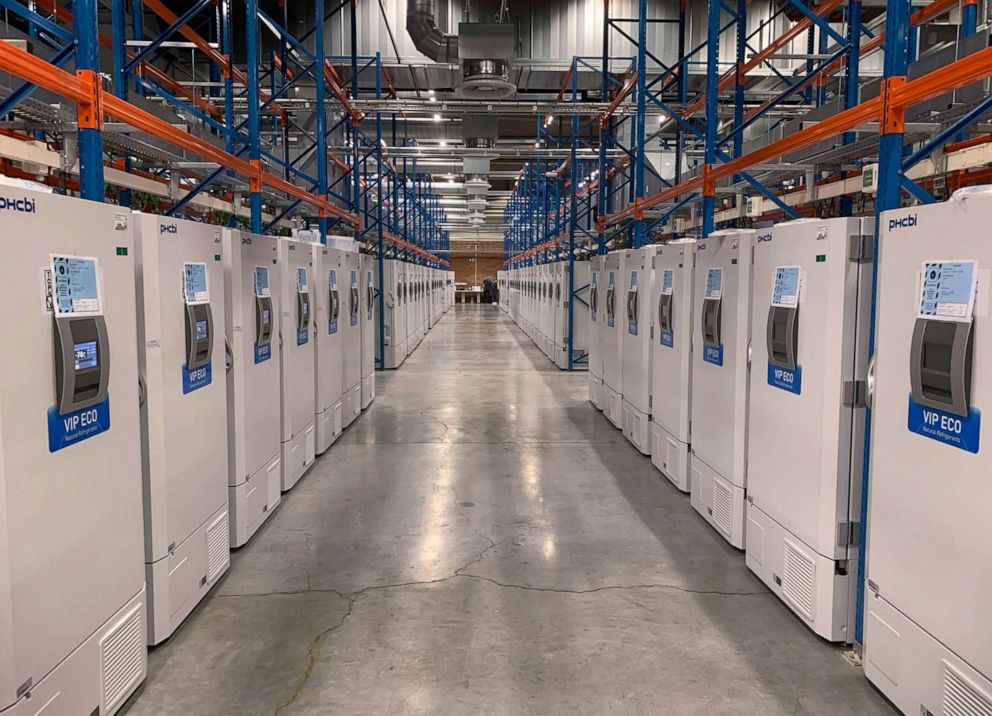
When it comes to COVID-19 vaccines, there are four main approaches that are currently being tested in late-stage trials across the globe.
Some are considered "old school" -- they use a traditional approach, which uses real weakened or killed virus to spark this immune reaction.
Others use little pieces of the virus' surface, rather than a whole dead virus. Still other vaccines use a different, inactive virus as a trojan horse to deliver genetic material from the COVID-19 virus.
And there's even newer technology that uses raw genetic material, such as RNA, to achieve the same goal by instructing cells to start making proteins normally found on the outside of the virus.
Most COVID-19 vaccines that are in late-stage testing require two shots spaced a few weeks apart, but a few will likely only need one.
Despite these differences, one thing is for sure -- any vaccine that is authorized in the United States will have undergone months of testing in large-scale experiments. Negative reactions from vaccines are rare, and the most common side effects like a rash or a sore arm occur within a few hours of being vaccinated.
The FDA is requiring safety data from at least half of the trial volunteers 2 months after the last injection. For full approval it will require at least 6 months of safety data. This could be as early as the spring 2021 for the frontrunners.
And experts say a vaccine will be the key to stopping this pandemic and going back to life as normal.
Genetic-code vaccines introduce an instruction manual comprised of genetic material called RNA or DNA. This instruction manual tells your cells to start churning out a protein normally found on the outside of the virus. When your body senses that viral protein, it activates an immune response.
Pros and Cons: Vaccines that use genetic material have never been used outside of medical research, but they can be manufactured rapidly.
Companies: Pfizer/BioNTech, Moderna
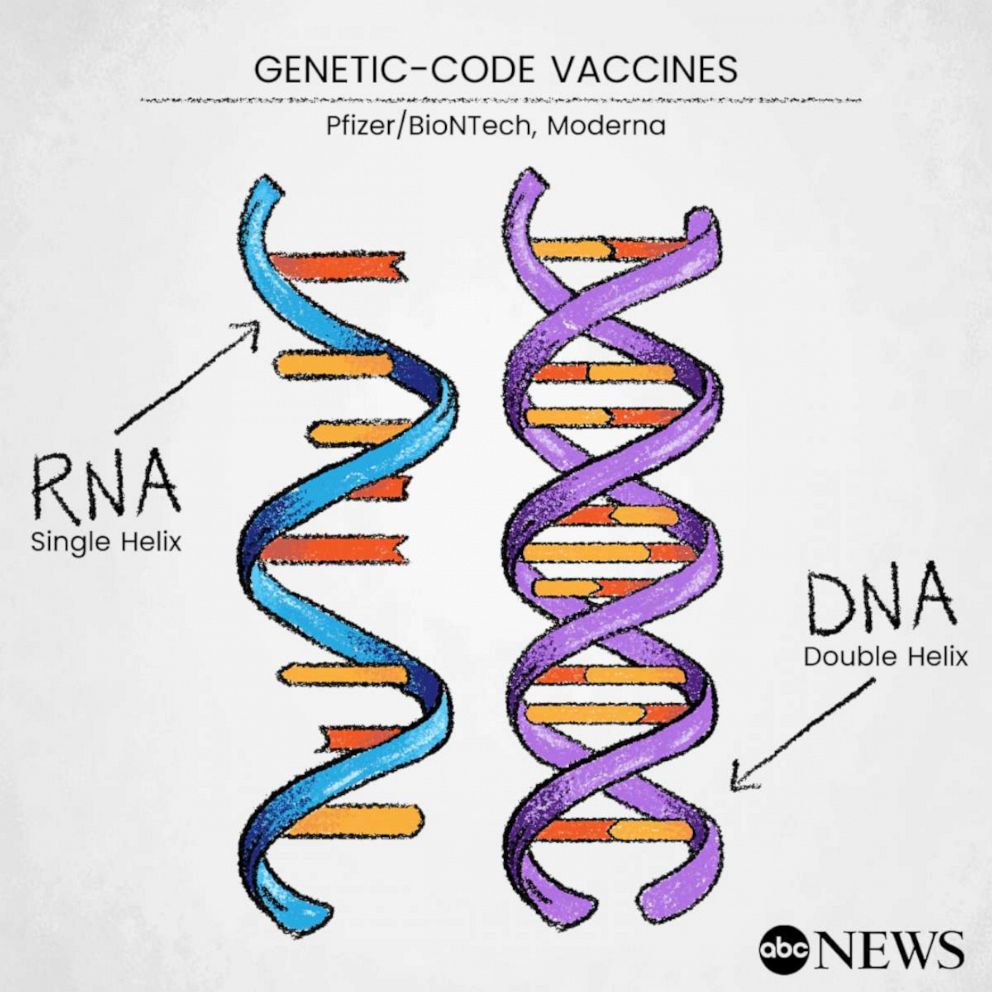
Viral vector vaccines use a different, virus as a "vector," or delivery mechanism, to introduce a bit of coronavirus’ genetic material into the cells, which your immune system then learns to identify and overcome.
Pros and Cons: Although these vaccines can be designed quickly, people might develop immunity to the viral vector itself, limiting the ability to give multiple booster shots.
Companies: AstraZeneca/Oxford, Johnson & Johnson are testing this approach, as well as the Chinese company CanSino and the Russian research institute Gamaleya
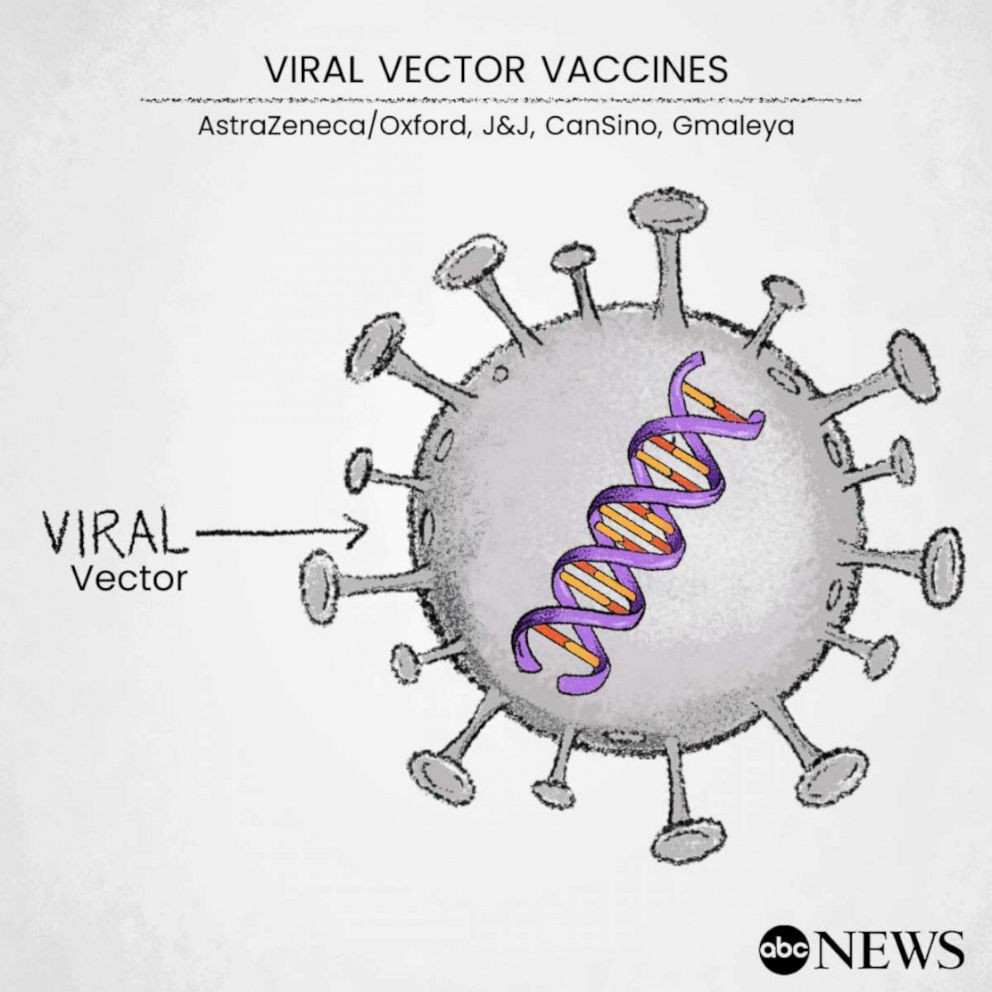
Subunit vaccines use a more traditional method that delivers viral fragments -- either the dead husk of a virus, or its disembodied proteins. These viral fragments can’t replicate and cause infection, but they do trigger an immune response.
Pros and Cons: This type of vaccine is slightly slower to produce, and may require booster shots. But it’s a tried-and-tested approach.
Companies: Novavax
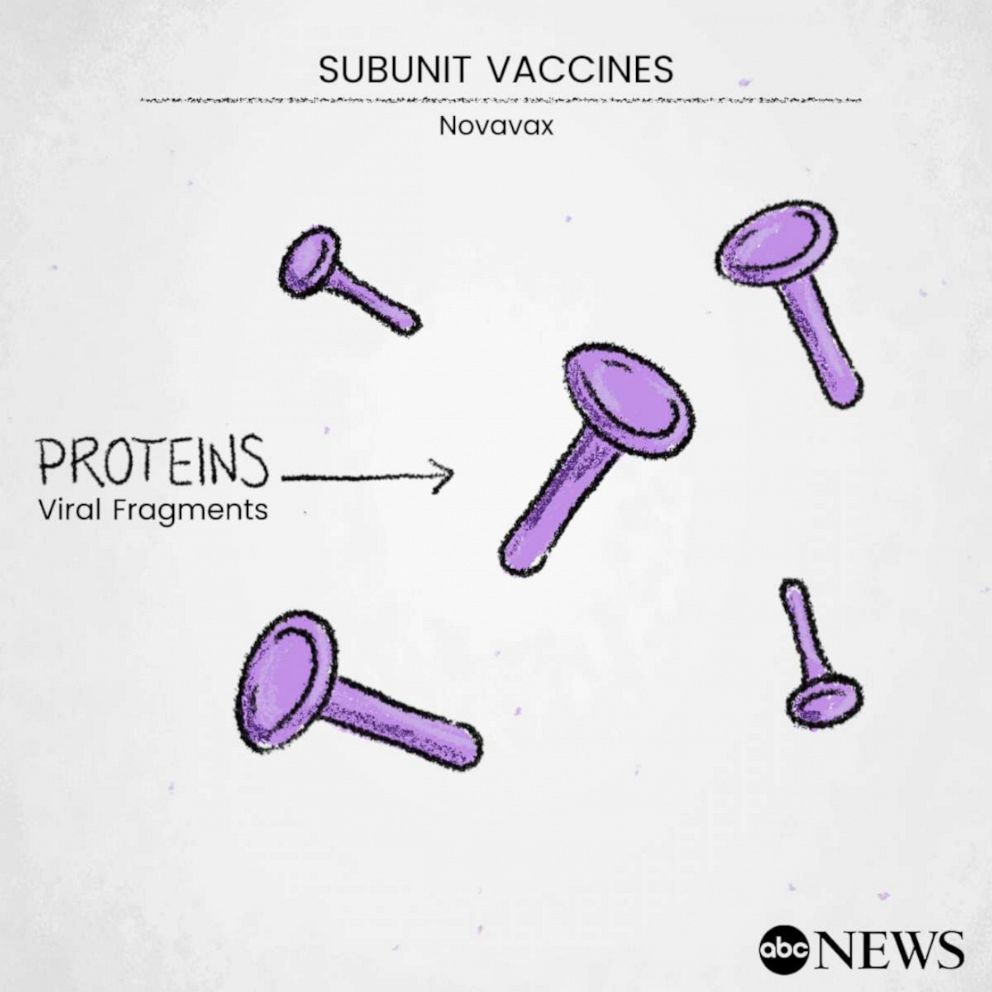
Weakened or inactive vaccines are an older approach to vaccine development. This method uses the virus itself, but scientists cripple or kill it completely to ensure it doesn’t cause an infection while still triggering an immune system response.
Pros and Cons: These vaccines are more difficult to manufacture quickly than other approaches, but they have a long history of success.
Companies: Many of the vaccines being tested in China, from companies such as Sinopharm and Sinovac, use this approach.
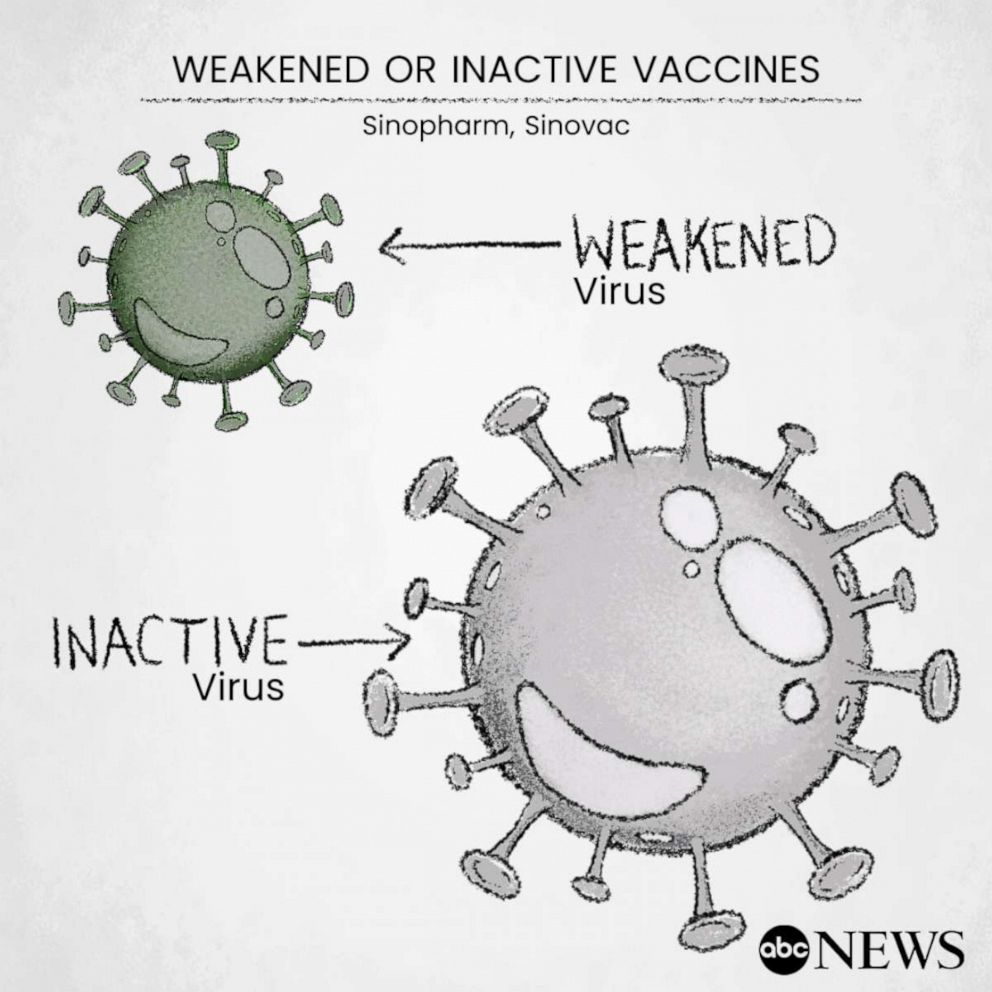
Dr. Justin Shafa contributed reporting.



